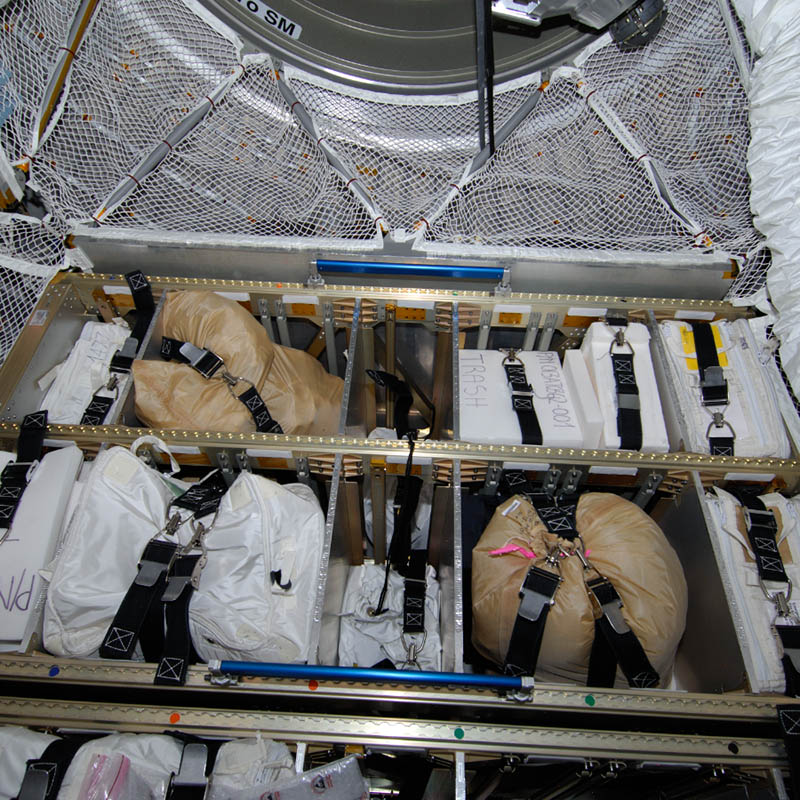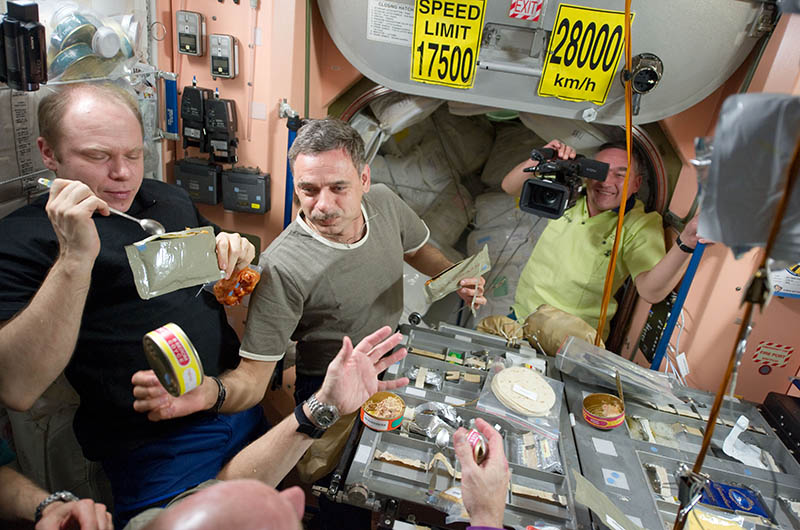Title image shows NASA astronaut Sunita Williams, Expedition 32 flight engineer, equipped with a bungee harness, exercises on the Combined Operational Load Bearing External Resistance Treadmill (COLBERT) in the Tranquility node of the International Space Station, 2012. Image Credit: NASA
Our innate view of exploration has been shaped over millennia. Explorers are brave idols, gaining fame. Explorers return with treasure and tales of the amazing. Exploration creates wealth. Exploration is done by humans.
Ever since we started telling each other stories of travel beyond our Earth, over two-thousand years ago, we’ve told stories of human explorers.
And, many, though not all of the early pioneers of space technology were motivated by the idea of human spaceflight. But, still today, Earth remains a uniquely habitable planet. Going to space is not like going on a cruise ship on the oceans. In a spaceship we have to build the systems to create and maintain an environment that can approximate that of the Earth’s.
So, what’s zero-gravity like. Well, I can’t lie, from my own experience, it’s a lot of fun. But, it’s also surprising just how quickly you adapt, even to only short periods of weightlessness like I’ve experienced.
Our perception of gravity informs so many of our senses, and space sickness is experienced by as many as half of people as they adapt to weightlessness. While I was lucky to avoid this, that number fits with my own experience. Space sickness is basically the opposite of motion sickness, it’s when things appear to be in motion but there is no sensation of motion.
Prolonged periods of weightlessness affect our body in lots of ways. Bone density decreases, muscles lose strength because we’re not using them, we get taller, and the fluid in our body shifts from the lower limbs to the upper body.
To help counteract these effects, just like on ground, exercise and health checks are vital.
A space cabin is rather similar to an airliner, it’s a pressurised structure designed to maintain an atmosphere. But, in space, even the air we breathe is complex. Afterall, you can’t just open a window to let in some fresh air.
Any air that leaks must be replaced from tanks on-board, and typically the on-board atmosphere will have a lower pressure than at sea level. The composition of the on-board air is a careful mix of oxygen and inert gases to balance the needs of human physiology, whilst also minimising the fire risk. Cabin air will also include carbon dioxide and water vapor, but too much carbon dioxide causes headaches and nausea.
The materials used in the cabin also need to be carefully selected, both from a fire safety perspective, and to ensure they don’t release toxic gases into the air.
The absence of gravity also creates challenges as you can get pockets of different gases in different parts of the cabin. For example, carbon dioxide will accumulate around a sleeping astronaut’s head. So, the air in the cabin must be circulated, making sure to avoid any stagnant areas and mixing the air as best possible.
After air, water is the most critical resource. The standard allocation per person, per day, is just over 3.5kg of water for drinking and food preparation, and 26kg for all other uses; washing, laundry, and so on. For spacecraft with fuel cell power systems, water is produced as a by-product. On the International Space Station power is produced by solar arrays, and as water is the most heavily consumed item for life support it’s vital that as much be recycled as possible. And, on the space station they do a great job of recycling. Even urine is recycled. Generally, anything that can be recycled, is. For example, water vapour is captured and recycled, while carbon dioxide can be catalysed with hydrogen to produce carbon and more water.

And, of course, the quality of this air and water all needs to be very carefully monitored for fungi, bacteria, and other forms of contamination.
In low-Earth orbit the atmosphere continues to provide some protection from space radiation, but even here, and certainly beyond, methods to mitigate the effects of this on the crew must be carefully considered. To help reduce the risk of cancer, spacecraft will have areas with increased shielding against space radiation, where crew can shelter. This is often the crew sleeping quarters.
However, life in space requires more than just these basics. The type of lighting and its placement can be vital, as is avoiding annoying or loud sounds from equipment. And, of course, you need to feed people. Generally, food is stowed and resupplied from the ground at regular intervals, but that isn’t an option as we move further from Earth and some small-scale production of vegetables and other crops has been tested in space. And, of course, having access to good quality, and a variety of food can be critical to crew moral.

As we do once again venture beyond low-Earth orbit, as missions get longer, and crew sizes larger, closing the life support system will become vital, making life in space more self-sustaining, and less dependent on being resupplied from Earth. And, hopefully, this will also teach us a few things about how we might live better on Earth.
Electronic & Electrical Engineering
Royal College Building
204 George St.
Glasgow G1 1XW